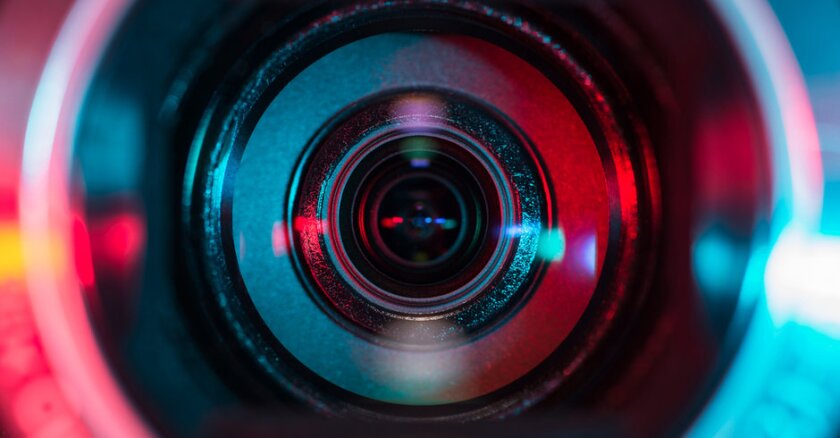My own tired face blinked back at me from a monitor late Tuesday night at the Detroit airport after the Transportation Security Administration screener told me to pull my mask down. A camera snapped my photo as I slid my driver’s license into a scanner box. The tandem system was matching the just-snapped photo of my face and the scan of my ID to see if I was actually who I claimed to be.
The screener told me, “It’s new,” as I stammered my surprise at the photo. While the agency says this is voluntary, even “opt-in,” in their reports, I wasn’t offered another option.
“TSA is exploring the use of facial recognition technology to automate identity verification at airport checkpoints and modernize the screening experience for travelers,” agency spokesman Daniel Velez told the Herald. “Facial recognition technology has the potential to enhance security effectiveness, improve operational efficiency and yield a more streamlined passenger experience at the TSA checkpoint.”
The pilot tech has been rolling out across the country’s airports for five years this month. So far, harried passengers have unexpectedly had their photos taken at John F. Kennedy Airport in New York, Los Angeles International Airport, Hartsfield-Jackson Atlanta International Airport, Denver International Airport and, for one year now, Detroit Metropolitan Wayne County Airport.
“By leaning further into the use of biometrics and the use of new technologies, we once again are setting new industry standards for safety, security and efficiency,” said Justin Erbacci, Chief Executive Officer for Los Angeles World Airports when the tech was introduced at LAX earlier this month.
Velez said the agency doesn’t have a specified timeline for the rollout, and that nobody in New England is having their faces scanned just yet — but “the plan is to eventually have this at every major airport in the country.”
The technology is raising some eyebrows on civil-liberties grounds, with at least one observer saying it’s not only an overstep in government surveillance but also misses the point of what airport security is supposed to accomplish.
“How does knowing who you are help them with security?” Jay Stanley, a senior policy analyst at the American Civil Liberties Union, told the Herald. He’s an author of a paper on the subject. “The purpose should be that nobody, no matter who you are, should be able to carry dangerous materials on an airplane. And by investing so much in facial recognition they are really doubling down in what is a misguided approach to airline security.”
While the TSA and parent agency Department of Homeland Security have laid out the general ideas and privacy implications of their programs and privacy implications, the ACLU filed a lawsuit in 2020 saying that mum’s the word on critical key information.
The TSA says using the facial recognition system is voluntary and that passengers who don’t want to have their photo taken can go through the regular, slower screening process. But Stanley said they said the same thing about the now-ubiquitous full-body scanners that have replaced the old metal detector units.
“Facial recognition is a dangerous surveillance technology whose risks increase as the government expands its implementations, even for identity verification,” Jeramie D. Scott, senior counsel at the Electronic Privacy Information Center, told the Herald. “What is a voluntary pilot today becomes a mandatory process tomorrow.”
The technology is an expansion to the domestic sphere from the international sphere. The same or similar technology has already been in place by the TSA’s sister DHS agency Customs and Border Protection under the name Traveler Verification Service for screening international flyers. By June 2019, the agency had already scanned the faces of more than 20 million travelers, according to an agency report.
That system snaps a photo of an international flier and compares it against a gallery of faces — made up of passport and visa photos — associated with the intended flight. It’s all a part of a comprehensive “TSA Biometrics Roadmap” the agency says will automate and “meet the challenges of evolving security threats, rising air travel volumes, resource constraints, and limits on operational footprint.”
But DHS doesn’t want to stop at airports to bring automation and artificial intelligence to bear in its security efforts.
The department sent out a contract opportunity last month under its Science and Technology Directorate’s Silicon Valley Innovation Program — which provides up to $2 million in equity-free grant funding over 24 months for prototype projects that could help their policing — for automated surveillance systems that can “identify people or objects of interest based on descriptive rules” in public areas they term “soft targets.”
That means cameras tracking people and objects across schools, sports venues, subway systems, tourist attractions or even private businesses like bars, theaters, churches and hotels without, as the ACLU’s Stanley said, hiring “armies of security guards to watch all the video that’s recorded every day.”
Human security costs money — TSA agent pay starts at $24.60 per hour with a possible $2,000 sign-on bonus — whereas machine vision costs just electricity and maintenance after the software has already been created and licensed.
“Facial recognition technology puts the control of your identity in the government’s hands,” Scott said. “That should not happen lightly, and we should be putting regulations in place and making decisions about how, if at all, the government should be able to use this technology before it moves forward.”
©2022 MediaNews Group, Inc. Distributed by Tribune Content Agency, LLC.








